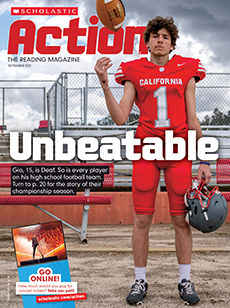It was July 1967. Steve Ashlock and John Cook were on a fishing trip in Montana at Glacier National Park. The 14-year-old boys had arrived the day before.
Glacier had been crowded all summer. But Steve and John quickly escaped the crowds. They hiked several miles up to Trout Lake. This is a beautiful lake surrounded by thick forests and rugged mountains.
At the lake, the boys spotted a group of bears. At least two were grizzlies. What luck! Grizzlies are among North America’s most powerful animals.
Steve and John weren’t frightened. They knew that grizzlies usually stayed away from humans. In Glacier’s 57-year history, there had never been a deadly grizzly bear attack.
But that was about to change.
And ideas about grizzlies—and how humans treat them—would never be the same.
It was July 1967. Steve Ashlock and John Cook were 14. They were at Glacier National Park in Montana. They were on a fishing trip.
Glacier was crowded. But Steve and John escaped the crowds. They hiked up to Trout Lake. This lake is surrounded by thick forests and rugged mountains.
At the lake, the boys saw a group of bears. At least two were grizzlies. What luck! Grizzlies are among North America’s most powerful animals.
Steve and John weren’t scared. They knew that grizzlies usually stayed away from humans. In Glacier’s 57-year history, there had never been a deadly grizzly bear attack.
But that was about to change.
And ideas about grizzlies—and how we treat them—would never be the same.
It was July 1967, and Steve Ashlock and John Cook were on a fishing trip in Montana at Glacier National Park. The 14-year-old boys had arrived the day before.
Glacier had been crowded all summer, but Steve and John quickly escaped the crowds. They hiked several miles up to Trout Lake, a beautiful lake surrounded by thick forests and rugged mountains.
At the lake, the boys spotted a group of bears. At least two were grizzlies. What luck! Grizzlies are among North America’s most powerful animals.
Steve and John weren’t frightened. They knew that grizzlies usually stayed away from humans. In Glacier’s 57-year history, there had never been a deadly grizzly bear attack.
But that was about to change.
And ideas about grizzlies—and how humans treat them—would never be the same.

